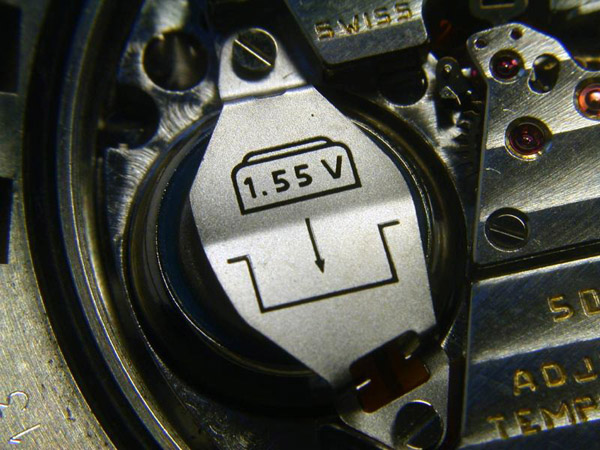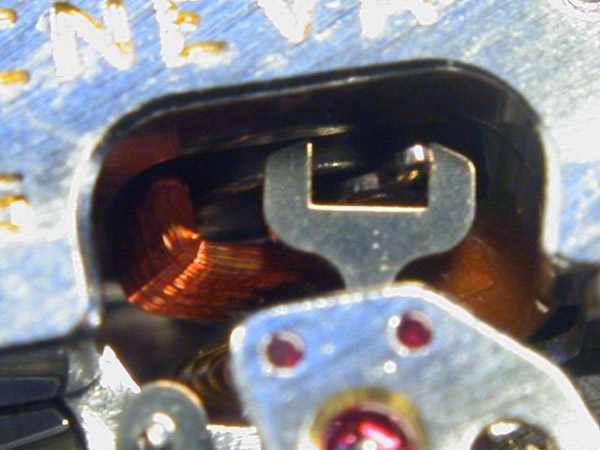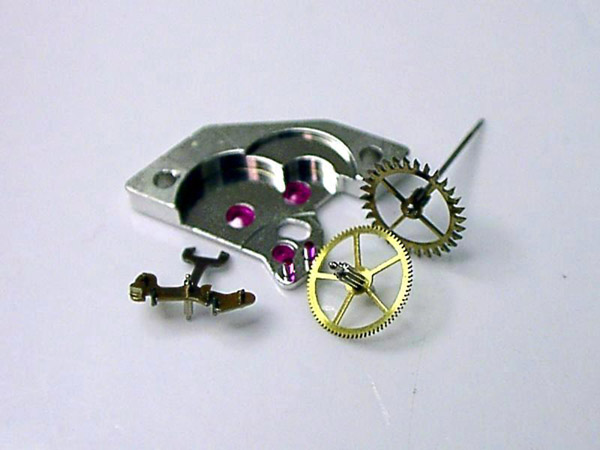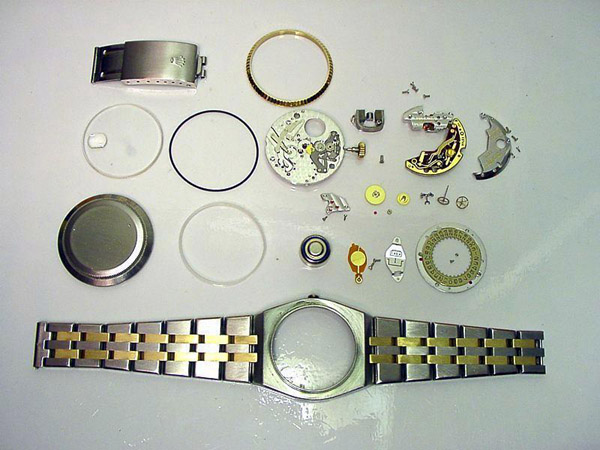In 1972 the final Quartz Date watches from the single run
of 1000 were sold and Rolex abandoned the Beta 21 and began with a clean
slate designing their own quartz movement and a totally new watch to
house it. Over five years of research, design, and development went
into the 5035/5055 movement that would eventually power the Oysterquartz. The
end result is arguably the finest quartz movement that has ever been
made.
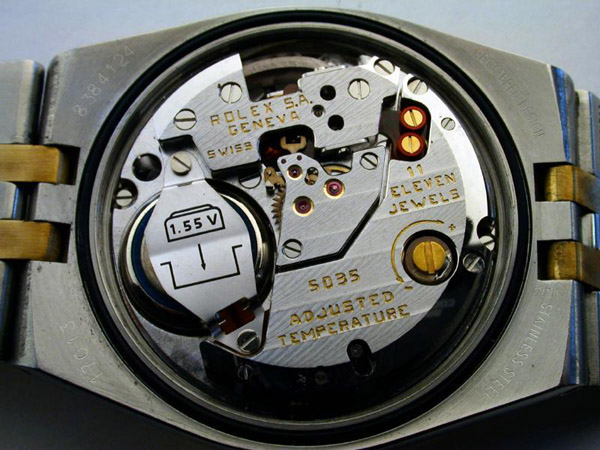
In moving away from the First Generation quartz
technology that characterized the Beta 21 and other early quartz
movements, Rolex recognized that two key elements to superior
accuracy in quartz timekeeping would be needed in their new quartz
movement: A higher frequency oscillator and some means to negate
the effects of temperature change on the stability of the oscillator.
Consequently, the oscillator used in the 5035/5055 was four times as fast as that used
in the Beta 21 and the module was one of the first quartz movements
to utilize analog thermocompensation. Oscillator stability over a
wide temperature range was accomplished through the use of a thermistor
to sense ambient temperature. Data from this sensor is sent to the electronic
control module which then regulates the voltage to the quartz crystal,
adjusting its rate accordingly. In addition, a rate trimmer is employed on the circuit
board which enables the
movement to be manually "fine tuned" during Rolex's
notoriously rigid internal testing and adjustment, something every Rolex
movement goes through before being sent to the COSC for
"official" chronometer certification. The rate trimmer
also allows for manual adjustment when the movement is serviced to compensate for the frequency drift that comes with the aging of the quartz crystal.
Approximately eighteen months after
the Oysterquartz was introduced the quartz crystal used in the oscillator
circuit was changed to a tuning fork shape. The earlier movements were
known internally at Rolex as Mark I movements, while the later ones with
the new shape quartz crystal were known as Mark II movements. The
Mark I 5035 Datejust movements were never submitted to the COSC for
chronometer certification, which accounts for the absence of
"Superlative Chronometer Officially Certified" on the dials of
the very early Oysterquartz Datejust models.
Everything about the design and construction of the
5035/5055 module shows that Rolex intended this movement to be a "lifetime" movement, designed to be serviceable and serviced just like their mechanical movements. In fact, apart from the electronics and the pulse motor, the "mechanics" of the 5035 are the same as the 3035 automatic movement that was
also introduced in 1977 and used in the Submariner and other Date/Datejust models for over a decade.
The drive mechanism for the 5035/5055 is
very similar to the design of a traditional mechanical watch escapement.
The pulse motor drives a pallet fork which in turn moves a pallet wheel.
This wheel drives the second hand at a 1:1 ratio with one tick per
second. The hour and minute hands are driven off this pallet
wheel. The loud "tick" you hear every second are the pallets
engaging the pallet wheel. That is why the tick of the 5035/5055 has
such a unique sound and is very much like the tick of a mechanical watch,
though at one tick per second rather than the eight ticks per second of a
28,800 bph Rolex Perpetual movement. This drive mechanism also ensures the
second hand steps around the dial smartly with zero backlash since the
hand is effectively locked in place by the pallet fork in between each
beat.
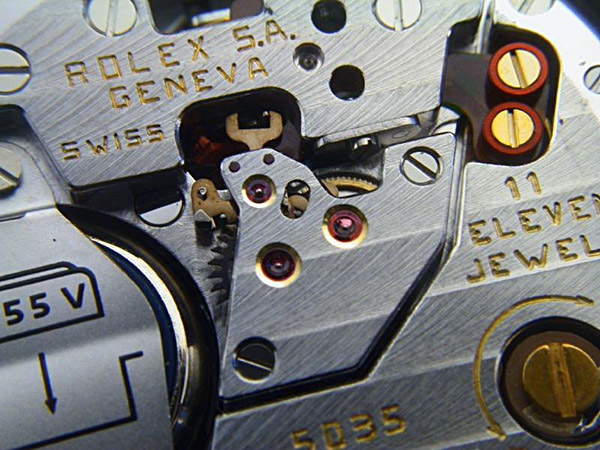
Even though the technology of quartz
wristwatch timekeeping has moved beyond that found in the 5035/5055,
this movement still remains one of the most "over-engineered" quartz movements ever
produced and clearly carries on the Rolex tradition of solid
engineering, superb finishing, and understated beauty. Advancements in
technology have yielded quartz modules with superior accuracy, but when
it debuted, the
5035/5055 only had one true rival from a technological standpoint: the
2.4Mhz Omega 1516 movement used in their famous Marine Chronometer
wristwatches of the mid 70s. But from the standpoint of "build
quality" and finish (anglage, perlage, and Geneva stripes), the 5035/5055 still reigns supreme, something
that is not likely to change in the foreseeable future.
|
5035 Specifications:
32,768Hz VCTCXO Quartz Module
Integrated
circuit: CMOS
Temperature
compensation: Yes
Rate
trimmer: Yes
Power source:
UCAR 357 silveroxide battery, 1.55v
Width: 29.75mm
Height: 6.5mm
11 jewels
Antimagnetic: Yes, to 1000 Oersted
Hacking: Yes
Quick set date: Yes
|
5055 Specifications:
32,768Hz VCTCXO Quartz Module
Integrated
circuit: CMOS
Temperature
compensation: Yes
Rate
trimmer: Yes
Power source: UCAR 357 silveroxide battery, 1.55v
Width: 29.75mm
Height: 7.1mm
11 jewels
Antimagnetic: Yes, to 1000 Oersted
Hacking: Yes
Quick set day-date: Yes
|
|




